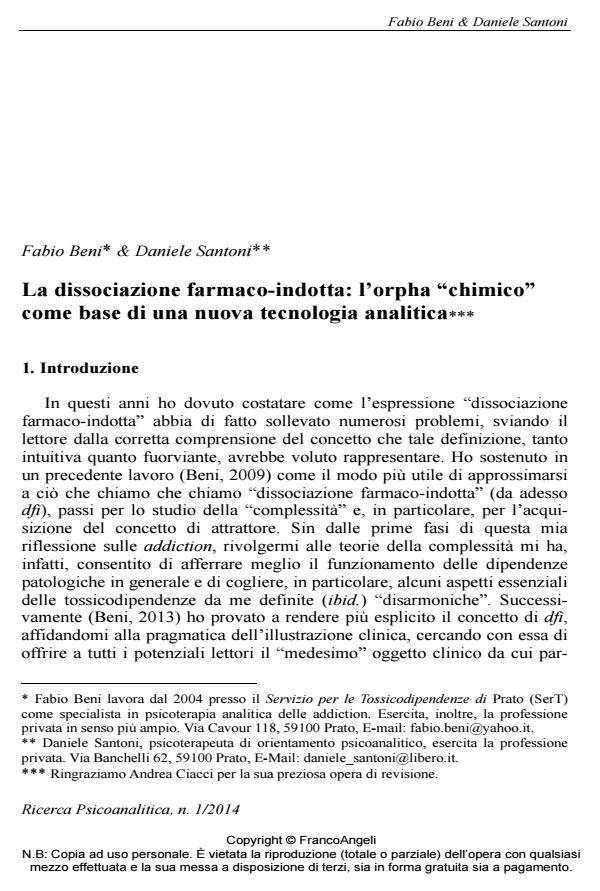La dissociazione farmaco-indotta: l’orpha "chimico" come base di una nuova tecnologia analitica
Titolo Rivista RICERCA PSICOANALITICA
Autori/Curatori Fabio Beni, Daniele Santoni
Anno di pubblicazione 2014 Fascicolo 2014/1
Lingua Italiano Numero pagine 18 P. 55-72 Dimensione file 692 KB
DOI 10.3280/RPR2014-001005
Il DOI è il codice a barre della proprietà intellettuale: per saperne di più
clicca qui
Qui sotto puoi vedere in anteprima la prima pagina di questo articolo.
Se questo articolo ti interessa, lo puoi acquistare (e scaricare in formato pdf) seguendo le facili indicazioni per acquistare il download credit. Acquista Download Credits per scaricare questo Articolo in formato PDF

FrancoAngeli è membro della Publishers International Linking Association, Inc (PILA)associazione indipendente e non profit per facilitare (attraverso i servizi tecnologici implementati da CrossRef.org) l’accesso degli studiosi ai contenuti digitali nelle pubblicazioni professionali e scientifiche
Gli autori tentano di rileggere il concetto ferencziano di orpha alla luce della teoria della complessità e in particolare del concetto di iperciclo. Tale operazione consente di comprendere in modo migliore il funzionamento di quelle psicopatologie caratterizzate dalla continua e ricorsiva polarizzazione della mente del soggetto intorno ad un determinato centro di gravità. Così facendo si apre inoltre la possibilità di reinterpretare la tecnologia ferencziana, nata intorno ad orpha e al trauma, utilizzandola come principale strumento di intervento nel campo delle dipendenze patologiche gravi.
Parole chiave:Orpha, tossicodipendenze, psicoanalisi, dissociazione, iperciclo
- Il trattamento preliminare: l'al di qua del transfert e le sue trappole Fabio Beni, Daniele Santoni, in RICERCA PSICOANALITICA 3/2016 pp.107
DOI: 10.3280/RPR2016-003008
Fabio Beni, Daniele Santoni, La dissociazione farmaco-indotta: l’orpha "chimico" come base di una nuova tecnologia analitica in "RICERCA PSICOANALITICA" 1/2014, pp 55-72, DOI: 10.3280/RPR2014-001005